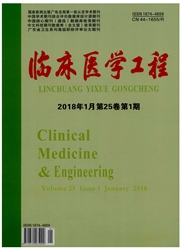

 中文摘要:
中文摘要:
前列腺素E2(PGE2)通过作用于4种功能相互拮抗的受体广泛地参与了机体及细胞代谢过程。这4种PGE2受体分别被命名为EP1、EP2、EP3和EP4,其中EP3又因mRNA的不同剪切方式分为多种亚型。所有的这些PGE2受体均是G-蛋白偶联受体.但具有不同的组织定位和表达调控方式,并介导不同的信号传导通路和生理学作用。在这4种受体中,EP2和EP4与同一种类型的G蛋白(激活型G蛋白,Gs)偶联,激活后都能增加细胞内的cAMP,因此它们的功能具有一定的重叠性,但在某些生理过程中它们又发挥着截然不同的作用。本文将就这两型受体及其生理学功能进行分析和总结,并重点讨论有关其研究的最新进展。
 英文摘要:
英文摘要:
Prostaglandin(PG)E2 exerts its physiological actions via four functionally antagonistic E-prostanoid (EP) receptors, which are designated as subtypes EP1, EP2, EP3 and EP4 respectively. The subtype EP3 has multiple mRNA splicing isoforms. All of these receptors are G-protein coupled receptors (GPCRs). The EP receptor subtypes exhibit different tissue distribution and expressional regulation, and mediate various signaling pathway and physiological functions. Among the 4 EP receptors, EP2 and EP4 are coupled to the same G-protein (stimulate G-protein, Gs), and increase cellular cAMP level upon activation. EP2 and EP4 function redundantly in some physiological processes, while they play distinct roles in some other processes. In the current paper, the latest advances in study of EP2 and EP4 receptors will be summarized and discussed.
 同期刊论文项目
同期刊论文项目
 同项目期刊论文
同项目期刊论文
 期刊信息
期刊信息
